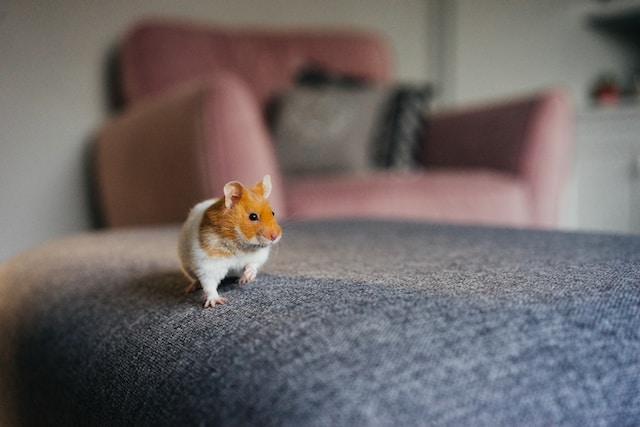There has been a lot of speculation regarding using Vaseline on hamsters. Some people believe that Vaseline can treat skin conditions, while others suggest it can be deadly for these small animals.
So, can Vaseline kill hamsters?
The short answer is that it’s possible.
Vaseline is a petroleum-based product that is not intended for consumption. If a hamster ingests Vaseline, it can cause a blockage in its digestive system, which can be fatal.
Additionally, Vaseline can be harmful if it gets into a hamster’s eyes or lungs. It is important to note that Vaseline is not recommended for hamster use, even if applied externally.
Can Vaseline Kill Hamsters?
What is Vaseline?
Vaseline is a petroleum jelly brand commonly used as a moisturizer for skin and lips. It is a mixture of mineral oils and waxes and is often used to soothe and protect dry or chapped skin.
Why is Vaseline Harmful to Hamsters?
While Vaseline is safe for humans, it can harm hamsters if ingested. Hamsters tend to groom themselves frequently, and if they ingest Vaseline while grooming, it can cause serious health problems.
The mineral oils in Vaseline can coat the hamster’s digestive tract, preventing the absorption of nutrients and leading to malnutrition. In severe cases, it can lead to intestinal blockages or even death.
What are the Signs of Vaseline Poisoning in Hamsters?
If a hamster ingests Vaseline, there are several signs to look out for. These include:
- Loss of appetite
- Weight loss
- Diarrhea
- Lethargy
- Difficulty breathing
- Abdominal pain or bloating
If you notice any of these symptoms in your hamster, it is essential to seek veterinary care immediately. Treatment may include supportive care, such as fluids and nutrition, as well as medication to help alleviate symptoms.
In conclusion, Vaseline can harm hamsters if ingested and lead to serious health problems. Keeping Vaseline and other petroleum-based products out of the reach of hamsters and other pets is essential to prevent accidental ingestion.
What to Do if Your Hamster Has Ingested Vaseline?
Immediate Steps to Take
If you suspect your hamster has ingested Vaseline, it is essential to take immediate action. Here are some steps you can take:
- Remove Vaseline from your hamster’s fur or mouth using a paper towel or a cloth.
- Offer your hamster water to drink.
- Observe your hamster closely for any signs of distress or discomfort.
When to Call a Vet
If you notice any of the following symptoms in your hamster, it is essential to contact a veterinarian immediately:
- Vomiting
- Diarrhea
- Abdominal pain
- Loss of appetite
- Lethargy
- Difficulty breathing
Treatment for Vaseline Poisoning in Hamsters
If your hamster has ingested Vaseline, the treatment will depend on the severity of the poisoning. Here are some standard treatment options:
- Inducing vomiting: If the ingestion was recent, your veterinarian might induce vomiting to remove any remaining Vaseline from your hamster’s stomach.
- Activated charcoal: Activated charcoal may be given to your hamster to help absorb any remaining Vaseline in the digestive tract.
- Supportive care: Your veterinarian may provide supportive care, such as fluid therapy and pain management, to help your hamster recover.
It is important to note that preventing Vaseline poisoning in hamsters is critical. Keep Vaseline and other petroleum-based products out of reach of your hamster, and never use them on or near it.
Preventative Measures to Avoid Vaseline Poisoning
Safe Household Products for Hamsters
When keeping your hamster safe, you must be aware of the products you use in your home.
Some household products, such as Vaseline, can harm your furry friend. However, many safe alternatives can be used instead. Some examples of safe household products for hamsters include:
- Coconut oil
- Olive oil
- Petroleum jelly-free lip balms
- Baby oil
Keeping Vaseline Out of Reach
If you use Vaseline in your home, keeping it out of reach of your hamster is essential. This can be done by storing it in a high cabinet or drawer your hamster cannot access.
Additionally, immediately clean up any spills or drips to prevent your hamster from accidentally ingesting it.
Alternative Products to Vaseline
As mentioned earlier, there are many safe alternatives to Vaseline that can be used instead. Coconut oil, for example, is an excellent moisturizer that can be used on your hamster’s dry skin. Olive oil can also be used to soothe irritated skin. If you are looking for a product specifically designed for hamsters, there are many options available at your local pet store.
Overall, it is essential to be aware of the products you use in your home and to take preventative measures to keep your hamster safe. Using safe household products, keeping Vaseline out of reach, and considering alternative products can help ensure your furry friend stays healthy and happy.




